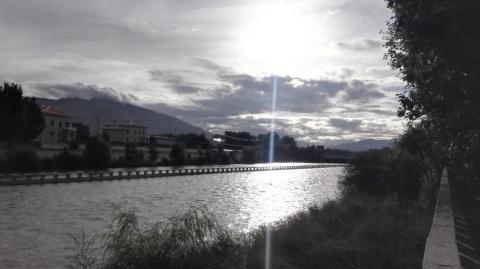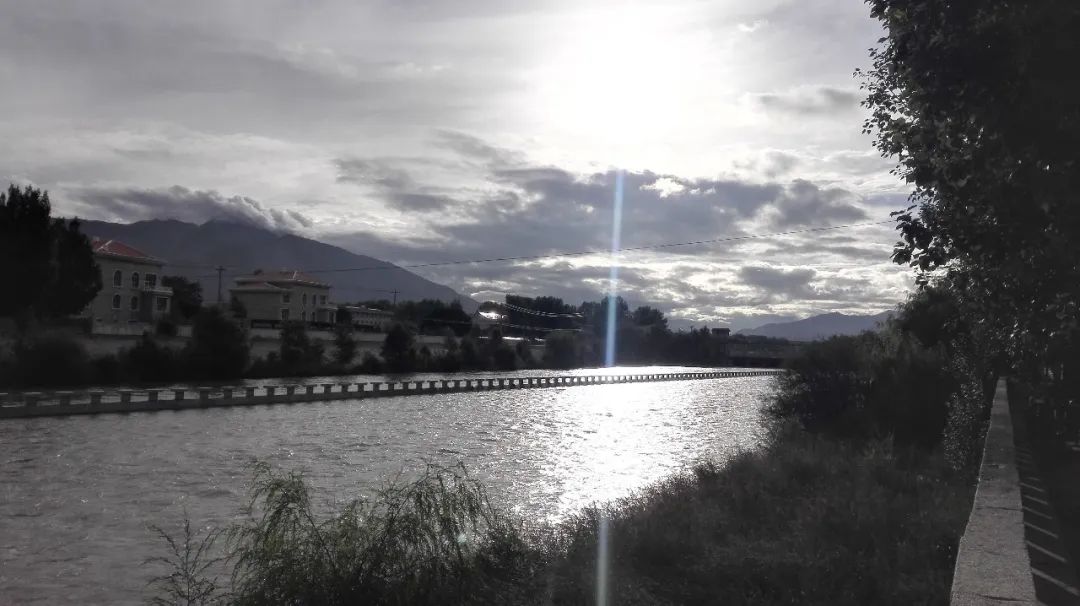

Encountering Tibet (Part 4)
The magnificence of Tibet is difficult to describe comprehensively, exhaustively and vividly in any language or text. Only by approaching it, walking into it, using your eyes, ears, and heart to see, listen, and feel can you truly appreciate it. To see her pure beauty and profundity, mystery and holiness.
Tibet, as long as you can come, every place here is paradise. Because I love walking, I can’t miss Tibet. During the long journey, in the vast world, it is an extremely satisfying thing to feel the sacredness of nature, feel the accumulation of history, release your truest self, make your heart richer, and meet a better self. This is what traveling is all about.
As far as traveling in Tibet is concerned, what everyone sees and feels in their hearts is not exactly the same. Some people just want to take beautiful photos, some just want to fulfill a wish, and some people want to pursue a certain spiritual and sacred feeling. But as long as everyone has been here, everyone, more or less, will go back with stories and memories. Although time has passed by, but every time I think about it, there are still inexplicable ripples in my heart.
Today, for our topic of encountering Tibet, we will talk about Lhasa alone, as a reference for those friends who often ask, "How should we arrange travel in Lhasa?"
Lhasa is the capital of China's Tibet Autonomous Region, the political, economic, cultural and religious center of Tibet, and a holy land of Tibetan Buddhism. Lhasa is located in the middle of the Tibetan Plateau, on the north side of the Himalayas, with an altitude of more than 3,600 meters. It is located in the valley plain of the middle reaches of the Lhasa River, a tributary of the Brahmaputra River. The Lhasa River flows through here and flows into the Brahmaputra River in the southern suburbs.
Lhasa has sunny weather throughout the year, with little rainfall, no severe cold in winter, no scorching heat in summer, and a pleasant climate. With more than 3,000 hours of sunshine throughout the year, it is known as the "Sunshine City". Lhasa is rich in various resources and has obvious resource advantages compared with other cities in the country and the autonomous region.
As one of the first batch of famous historical and cultural cities in China, Lhasa is famous for its beautiful scenery, long history, unique customs and strong religious color. It has successively won the titles of China's Excellent Tourism City, European Tourists' Favorite Tourism City, National Civilized City, and Charming City with Chinese Characteristics. City, the most secure city in China and other honorary titles.
In Lhasa, the most important festivals in a year are: Tibetan New Year, Saga Dawa Festival, Shoton Festival and Lantern Festival. In addition to the above festivals, there are also Wangguo Festival, Bathing Festival, Lantern Festival, Fairy Festival and some other religious festivals.
Lhasa New Town is centered on the Potala Palace and Barkhor Street. Standing on the top of the Potala Palace and overlooking the entire city of Lhasa, the entire urban area of Lhasa is full of new-style buildings hidden among green trees. Only the Barkhor Street area is full of prayer flags and mulberry smoke. Here, there are densely populated houses and streets with quite ethnic styles, and people from all over Tibetan areas gather. Many of them still wear the traditional clothes of their own people. The prayer wheels and rosary beads that never seem to leave their hands clearly show that Buddhism actually It has become a way of life for them.
There are many historical sites in Lhasa. The Potala Palace (recommended tour time is 2 hours), Jokhang Temple (recommended tour time is 1.5-2 hours) and Norbulingka (recommended tour time is 1-1.5 hours) are listed as world cultural heritage. The main tourist attractions include Drepung Monastery (recommended tour time is 4-6 hours), Sera Monastery (recommended tour time is 2 hours), Ramoche Temple (recommended tour time is 0.5-1 hour), Barkhor Street (recommended tour time is 2 hours) ), Yaowang Mountain (recommended tour time is 0.5 hours), Namtso (recommended tour time is at least 1 day), etc. It is recommended that before visiting the temple, you must understand the history, sect, characteristics and other knowledge of the temple in advance, so that you can understand the way and understand the meaning.
What you should experience most in Lhasa is slow life. Here, you will unconsciously slow down your pace and rhythm, follow the local Tibetans on the prayer path of Barkhor Street, and make some beautiful blessings and wishes. It is very pleasant to sit down, drink sweet tea and bask in the sun in front of the Jokhang Temple.
Generally speaking, the best time to travel to Lhasa is from May to October. During this period, the sunshine in Lhasa is warm and the vegetation grows luxuriantly. If you are not in a hurry, it is recommended to stay in Lhasa for 3-5 days. There are many youth hotels and folk customs, and the prices are generally not expensive. After you settle down and get used to it, you can walk around the city every day, go shopping, take public transportation or drive by yourself, and get a feel for the life in Lhasa. If you plan to visit attractions in surrounding areas, add 2-3 days to each area. If you are in a hurry, you usually have to stay for 2 days, so you can relax and adapt to the plateau environment.
There are more tourists in Lhasa from June to August. If you simply want to understand and experience the cultural scenery, it is suitable all year round and you can stagger the peak tourist period. The winter in Lhasa is not as cold as expected. The highest temperature during the day is generally between 10-15℃. The sun looks very warm, but it is drier. There are fewer tourists during this season, and many scenic spots are exempted from travel privileges due to the "Winter Tour in Tibet" tourism preferential policy, so travel costs will drop a lot. This season is the best season to experience local folk customs.
Autumn in Lhasa (September to November) should be the best tourist season of the year, especially mid-October to late October. The autumn scenery is pleasant and unforgettable, and it avoids the high passenger flow during the National Day Golden Week.
Dressing in different seasons in Lhasa is different. Generally, you should consider what you wear based on the season and the different tour routes throughout the journey. Due to the climate characteristics of Lhasa, it is recommended that sun protection and warmth should be worn as standard clothing throughout the year: sun hat, sunglasses, umbrella, scarf (or mask), long-sleeved jacket, jacket or down jacket, sports shoes, etc. When traveling outdoors, you should mainly wear functional clothing that is warm, windproof, and rainproof. You should not wear overly revealing and sexy clothing when entering religious temples, and do not wear ankle-length trousers or long skirts to prevent tripping hazards when going up and down stairs.
Most restaurants in Lhasa mainly serve Sichuan and Tibetan cuisine, and the tastes tend to be spicy. At the same time, Lhasa also has various delicacies from all over the country and even the world, so there is no need to worry about whether you can eat a certain taste of food. But due to long-distance transportation costs, food in Tibet is relatively expensive.
The Sweet Tea House is a social center for locals. In addition to sweet tea, it also provides Tibetan noodles, Tibetan dumplings, Tibetan cakes, French fries and other specialty snacks. Drinking sweet tea, eating snacks, and watching the locals play cards and chat about the mountains is a folk experience not to be missed.
I wish all readers a happy journey and life!

